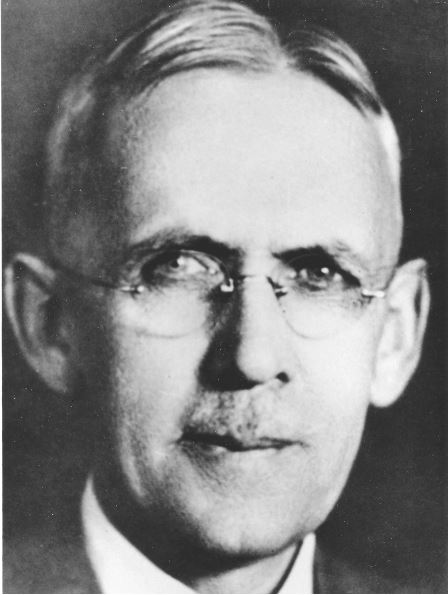Henry Wright, three years away from the beginning of his long career at the University of Manitoba, wrote a short commentary that appeared in the 1917 Journal of Philosophy.1 In it he broached topics he would continue to investigate throughout his tenure in Winnipeg and that would recognizably shape the subsequent career of one of his students there, Marshall McLuhan2:
the distinction between spirit and matter— ontological dualism, as it may be — stands and is destined to stand as a reasonable inference from the most persistent and essential distinction that reveals itself in human experience. (…) In one department of (…) experience (…) human activity (…) is self-determined. (…) In the other department (…) activity [is] strictly limited, definitively circumscribed by conditions external to itself.3
Multiple questions are posed. What fundamental distinctions characterize ontology? Does it have two “departments” as “ontological dualism”? Or must an ontological 2 be at least 3 since a further “department” must be present that would both keep the 2 distinct and yet relate them to each other as equiprimordial? What are the relations of such ‘distinct’ ontological “departments” both ‘horizontally’ among themselves and ‘vertically’ to the experienced (ontic) world? And what are the relations of these “departments” as expressed within the ontic world itself?
Now the philosophical tradition, according to Wright, has admittedly opened itself to
the charge of intellectualism (…) which could yield nothing better than conceptual abstractions such as “the good” or “substance” or “the absolute”4
But behind this “intellectualism” and these “conceptual abstractions” was a proper aim at a needed goal:
not in making such distinctions as that of spirit from matter, but in attempting to reconcile the conflicting factors…5
The key to reconciliation, according to Wright, lies not in the opposed distinctions themselves but in their interrelation:
The true solution for the distinction of matter from spirit (…) is to be found through a study of (…) social life.6 The word “social” deserves emphasis…7
Now such study must not, says Wright, hold “the factor of originality in abeyance”. This remark, almost an aside, implies many fundamental questions, but they were not developed here by Wright. What is “originality”? Is it singular or plural? How does it (or they) stand to the “ontological”? And to the ontic subject? Lastly: just what is “abeyance” and how does it stand to all the questions in play here?8
Further from Wright:
The reconciling experience which we seek can be found clearly revealed only in (…) social activities9 (…). Such an activity is that of verbal communication (…) Another (…) is (…) the intricate system of activities which engage [us] together in the work of the world (…) A third example of the kind of activity in question is that of esthetic appreciation (…) [at work in the] apprehension of new meanings and values…10
Wright raised these problems in a rambling old-fashioned sort of way that McLuhan would explicitly reject. But the problems themselves engaged him deeply such that his whole career may usefully be seen as an investigation into the questions precipitated by Wright’s issues.
- Henry Wilkes Wright, ‘Spirit and Matter: A Reply To Dr. Dashiell‘, Journal of Philosophy, 14:15, July 1917, 400-403. ↩
- Comments on McLuhan’s takes on Wright are given in the notes below. ↩
- Wright, some sentences later: “Two factors are operating in human experience. These two factors are (…) rational will and (…) objective reality. ↩
- Nothing better than (…) “the good”! ↩
- The great question, of course, is whether this is something we can accomplish with our limited means in chronological time or is it something we must attend in its already realized accomplishment before us? Or is it both of these together, where we can indeed accomplish important reconciliations in many areas, but are able to do so on the basis only (only!) of always already accomplished reconciliations before us? ↩
- Wright has “(hu)man’s developing social life” here. McLuhan would come to see that the chronological aspect of ‘developing’ is highly questionable and, indeed, must be investigated as a figure against the ground of “allatonceness”. Further, “social life” itself must be probed. Is it purely ontic as “(hu)man’s developing social life”? Or is it first of all ontological as the abysmal principle of a thought-provoking plurality (or society) of distinctions in reality itself? Or is it both of these together as the primordial bond, or bonds, between ontological distinctions, AND the isomorphic bonds between ontological grounds and their ontic figures, AND the isomorphic bonds between the ontological distinctions as they are expressed ontically? In chemistry these same relations appear between elements in Mendeleev’s table and their expression in and as materials. ↩
- Wright’s “social” will become, 40 years later, McLuhan’s “the medium (that) is the message”. ↩
- The etymology of ‘abeyance’ traces back to ‘gape, open wide’ — as its cognate word ‘bay’ is to the sea. Ultimately, this will be McLuhan’s “gap where the action is”. ↩
- Wright: “in our more highly developed social activities”. See note #6. ↩
- Like Wright’s other areas of “reconciling” activity, language use and social activities, his “esthetic appreciation” as the “apprehension of new meanings and values” is a matter of the between — in this case the between bridging old and new “meanings” and old and new “values”. But what is the nature of this mediating between? Of this “medium“? Where and when does it arise, what is the manner of its operation and what is the variated range of its activity? ↩
